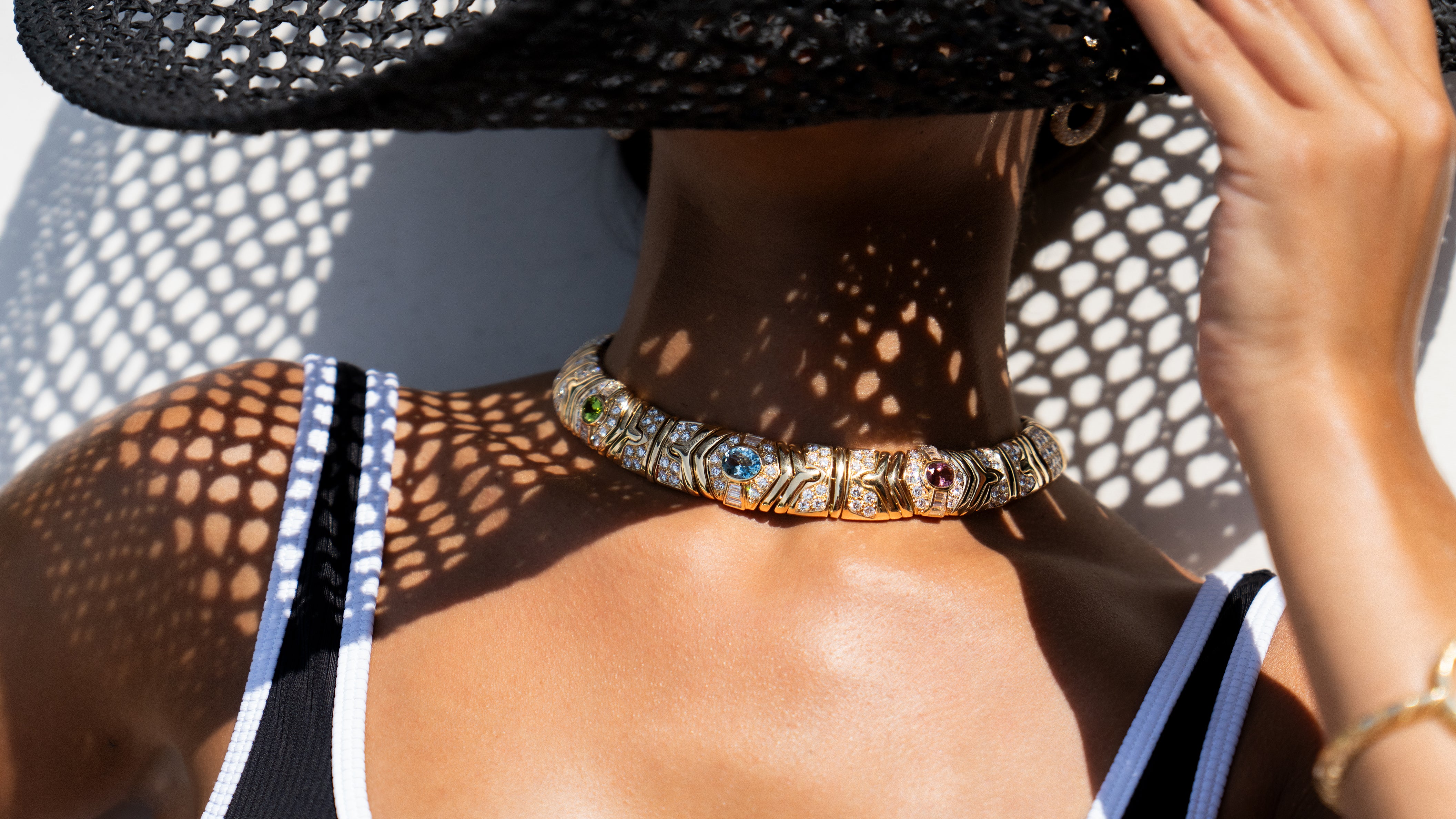Chanel
Gabrielle Chanel juxtaposed costume jewelry with high jewelry, turning the mostly conservative jewelry industry on its head.
First There Was Fashion
In 1913, Gabrielle Coco Chanel, aged 30, opened the doors to the first Chanel boutique in Deauville. There she sold clothing that was both casual and luxurious. In 1921, arguably, the most famous of all scents, Chanel No. 5, was introduced. Five years later, Chanel designed the first Little Black Dress.
Creating Costume Jewelry
It was during the 1920s that Chanel introduced her collection of costume jewelry. At that time, wealthy fashion mavens would never consider wearing costume jewels, which were looked down upon as being suitable only for the hoi polloi. Chanel changed the public's perception of jewelry by wearing both the fine quality jewelry given to her by her suitors and adding ropes of faux pearls and necklaces.
Costume jewelry isn't made to provoke desire, just astonishment at most. It must remain an ornament and an amusement. – Gabrielle Chanel
Chanel's costume jewelry incorporated both natural gems and simulated color stones, breaking new ground in fashion jewelry. Unlike her understated clothing designs, Chanel jewels were flashy, bold, and very ornate. Artistic and social encounters became the inspiration for Chanel's costume jewelry. She decorated her models in jewelry that mirrored her own approach, layering necklaces, stacking bracelets, and adding brooches to finish the look.
As well as mixing costume and fine jewelry, Chanel designed pieces to be worn in unique ways. Cuff bracelets replaced shirt cuffs. Belts were fashioned entirely with jewels. A brooch placed just so was worn to alter the shape of a dress. Chanel's jewelry was created not only as an accessory but also as an integral part of a woman's wardrobe, the perfect finishing touch to Chanel's couture clothing.
In 1927, Chanel turned to Duke Fulco di Vedura, a textile designer with a talented eye for style. She asked him to update the settings of her own fine jewelry. Fulco became the lead designer of Chanel jewelry for the next eight years.
Chanel and Fulco created the Chanel Maltese Cross motif, which was inspired by the star of the Knights of Malta. Fulco filled his Maltese cross with a variety of colorful semi-precious gemstones in a pair of white enamel bracelets. Chanel loved the bracelets, wearing them regularly. The now-iconic motif became a permanent part of the Chanel jewelry collection.
Exposition de Bijoux et de Diamants
I wanted to shower women in constellations. – Coco Chanel
Chanel's first foray into fine jewelry came in 1932. Diamond merchants approached Chanel to create a collection that would give a boost to the diamond business, which had been lagging during the devastating economic conditions created by the Great Depression. Chanel responded by producing The Bijoux de Diamants, an event she hosted in her apartment at 29 Faubourg Saint-Honoré in Paris.
Creating couture settings to house the diamonds, Chanel removed clasps, lengthened necklaces, and sent comets streaming across shoulders in a collection that created quite a furor among the high jewelers in the Place Vendôme.
In keeping with her penchant for the number five, Chanel laid out five themes for her fine jewelry collection: Stars, Suns, Ribbons, Fringes, and Feathers. It was said the themes mirrored the mosaics that appeared on the floor of the church at the orphanage where Chanel spent her childhood.
The wax mannequins used to display the jewels were made up to create a lifelike appearance. The busts were displayed in glass cases. A Pathé newsreel from the time proclaims, "Only a woman can scatter precious stones so gracefully through hair, with jewels cascading like gossamer ribbon."
Pieces included in the collection were a Big Dipper pendant; a brilliant sun brooch created by a burst of yellow diamonds fashioned in gold; an open necklace displaying a pair of comets, one on either side of the neck; twist bracelets; and open rings with ribbons of diamonds displayed between the fingers. The more elaborate pieces were transformable.
Critics dismissed her designs, urging her to stick to her costume jewelry collections. It was to be Gabrielle Chanel's only foray into fine jewelry in her lifetime. Not until the 1990s, long after Gabrielle's death in 1971, would the House of Chanel once again take up the creation of high jewelry.
Post World War II
Chanel closed her shop for the duration of World War II. In 1954, she resumed the production of her costume jewelry collections. She turned to French jeweler Robert Goossens, who was well established in the couture jewelry sector. Goossens, like Chanel, enjoyed mixing faux and semi-precious gemstones. He would continue to design for Chanel until her passing.
An Homage to 1932
In 2012, Chanel premiered the "1932" High Jewelry Collection to celebrate the 80th anniversary of the Exposition de Bijoux et de Diamants. The collection included exact replicas of the pieces produced by Gabrielle Chanel for the 1932 exhibit.
